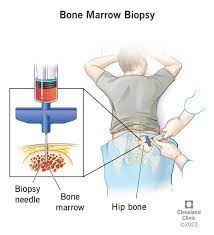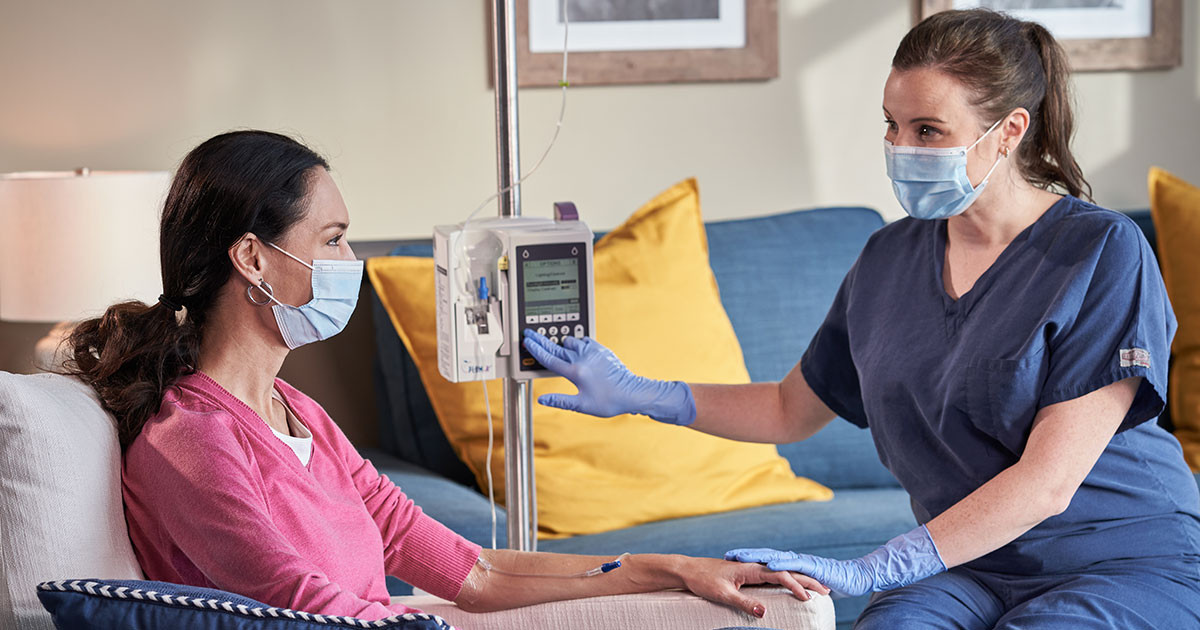Definition
The leukemoid reaction is a response to an abrupt rise in the quantity of white blood cells in the body. It can be confused with leukemia due to the similarity in symptoms. The condition can be caused by various factors, such as infections, cancer, or the side effects of certain medications.
Leukemia is a cancer of the blood-forming cells in the bone marrow that leads to an abnormal increase in white blood cells.
Having a leukemoid reaction does not necessarily mean you have cancer, but it can be a sign of a severe medical condition that requires treatment. A leukemoid reaction is defined as a white blood cell count above 50,000 cells per microliter (µL) of blood.
Normal white blood cell value based on age:
|
Age |
Normal value (µL/blood volume) |
|
Newborn |
13.000-38.000 |
|
Child |
5000-20.000 |
|
Adult |
4500-11.000 |
|
Pregnant woman (third trimester) |
5800-13.200 |
A blood test for someone with a leukemoid reaction usually shows an increase in mature neutrophils and immature granulocytes. These types of white blood cells play a crucial role in the frontline defense of the immune system.
Neutrophils are the most abundant type of white blood cells in the bloodstream. They play a role in combating bacterial, viral, or fungal infections.
Meanwhile, granulocytes are released during infections and inflammatory conditions. Granulocytes assist in fighting off invading microorganisms and signal other white blood cells to join in the attack.
Differences between leukemia and leukemoid reactions:
|
Leukemoid reaction |
Leukaemia |
|
The leukemoid reaction is an increase in the number of white blood cells caused by conditions other than blood cancer |
Leukemia is a type of blood cancer that occurs when the bone marrow produces an excessive amount of abnormal white blood cells |
|
The leukemoid reaction is more likely to be characterized by an increase in mature neutrophils |
The type of leukemia called chronic myeloid leukemia often shows an increase in abnormal granulocytes |
The leukemoid reaction is classified based on the type of white blood cell that increases, including:
- Granulocytic reaction: The granulocytic reaction is the most common type. An increase in the number of neutrophils usually marks it. This can be a sign of infection, certain types of cancer, and other conditions
- Lymphocytic reaction: A lymphocytic reaction is characterized by increased white blood cells called lymphocytes. Lymphocytic reaction is often a sign of the immune system's response to cancer cells
- Monocytic reaction: A monocytic reaction is marked by increased white blood cells called monocytes. These cells develop in response to infection or injury
Causes
Various conditions that cause your body to become inflammatory or stressed can result in a leukemoid reaction. Conditions associated with leukemoid reactions include:
- Sepsis (a life-threatening infection)
- Organ rejection after organ transplantation
- Bacterial infections
- Hepatitis
- Tumors or cancer
Risk factor
Several factors increase the risk of elevated white blood cell count:
- Severe allergies
- Ethylene glycol poisoning
- Tuberculosis and diphtheria
- Use of corticosteroid medications
- Undergoing splenectomy (removal of the spleen)
- Severe bleeding
In addition, the risk of an elevated white blood cell count in infants includes:
- Mother with gestational diabetes (pregnancy-related diabetes)
- Sepsis
- Infants with abnormalities such as Down syndrome
Read more: Acute Leukemia - Definition, Cause, Symptom, And Laksana AI Care (ai-care.id)
Symptoms
The symptoms of leukemoid reactions vary depending on the underlying cause. Commonly observed symptoms include:
- Fever or chills
- Fatigue
- Nausea or vomiting
- Recurrent infections
- Cough
- Sore throat
- Changes in skin color
- Changes in bowel movement patterns
- Easy bruising
- Sudden, unexplained weight loss
- Slow-healing wounds
- Swollen lymph nodes
- Dry mouth
Diagnosis
The doctor will conduct a medical interview (anamnesis), a physical examination, and additional tests to confirm the diagnosis. The medical interview involves asking about the main complaints, accompanying complaints, when the complaints started, past medical history, treatment history, and family medical history.
Next, the doctor will perform a physical examination by checking vital signs (pulse, blood pressure, body temperature, and respiratory rate). Then, the doctor will conduct a comprehensive examination from head to toe.
If you are experiencing a leukemoid reaction, the doctor may find bruises on the body, swollen lymph nodes, or wounds that are not healing.
The doctor will conduct additional tests to confirm the diagnosis, including blood tests, urine tests, tissue biopsy, genetic tests, and radiological examinations.
During these tests, the doctor can differentiate between leukemoid reactions and leukemia by examining peripheral blood smears. Peripheral blood smears help the doctor determine your medical condition through microscopic examination of white blood cells to assess their quantity and characteristics.
Read more: Leukemia In Children - Definition, Cause, Symptom, And Laksana AI Care (ai-care.id)
Management
The leukemoid reaction is treated by addressing the underlying condition that causes it. For example, bacterial infections, such as tuberculosis, are treated with antibiotics. Underlying cancers can be treated with therapies such as radiation therapy, chemotherapy, targeted therapies, immunotherapy, and surgery.
Meanwhile, leukemoid reactions caused by alcoholic hepatitis can be treated by stopping alcohol consumption, consuming vitamin supplements, liver transplantation, medications, and having a healthy lifestyle. The improvement of the leukemoid reaction depends on the underlying cause. Blood cell counts usually return to normal when the underlying condition is treated.
The high number of white blood cells may indicate an advanced infection. A study found that people with leukemoid reactions associated with infection and cancer have a poor rate of improvement or recovery.
Complications
Complications include the development of blood hyperviscosity syndrome or a leucostatic condition. Leucostatic occurs when the number of white blood cells exceeds 100,000 μL/blood volume. This condition can lead to disturbances in blood flow.
Other possible complications include:
- Respiratory failure
- Bleeding Kidney failure
- Heart disturbances
Prevention
There is no specific way to prevent leukemoid reactions, especially if you already have a disease that may cause leukemoid reactions, other than treating that underlying disease thoroughly.
Things that can be done to support healing and prevent leukemoid reactions include:
- Maintaining a healthy lifestyle by consuming a balanced diet
- Avoiding drug abuse, alcohol, and smoking
- Getting enough sleep
- Avoiding stress
- Consuming enough water
When to see a doctor?
If you experience symptoms as described above, promptly consult a doctor for a blood test to identify the leukemoid reaction.
Leukemoid reactions can lead to various complications, some of which may be serious and life-threatening. To prevent complications, seek medical help promptly if you have symptoms or risks associated with a leukemoid reaction.
Early and appropriate management can prevent complications. After treatment, your blood cell count is likely to return to normal.
Looking for more information about other diseases? Click here!
- dr Nadia Opmalina
Leukemoid Reaction - Healthline (2022). Retrieved 21 April 2023, from https://www.healthline.com/health/leukemia/leukemoid-reaction#takeaway
Medical News Today - Leukemoid reaction vs CML (2021). Retrieved 21 April 2023, from https://www.medicalnewstoday.com/articles/leukemoid-reaction-vs-cml
Patel AB., et al., (2019) Leukemoid reaction in chronic myelomonocytic leukemia patients undergoing surgery: perioperative management recommendations. Retrieved 21 April 2023, from https://ashpublications.org/bloodadvances/article/3/7/952/247286/Leukemoid-reaction-in-chronic-myelomonocytic
Leukemoid Reaction. MedlinePlus (2022). Available from: https://medlineplus.gov/ency/article/000575.htm











